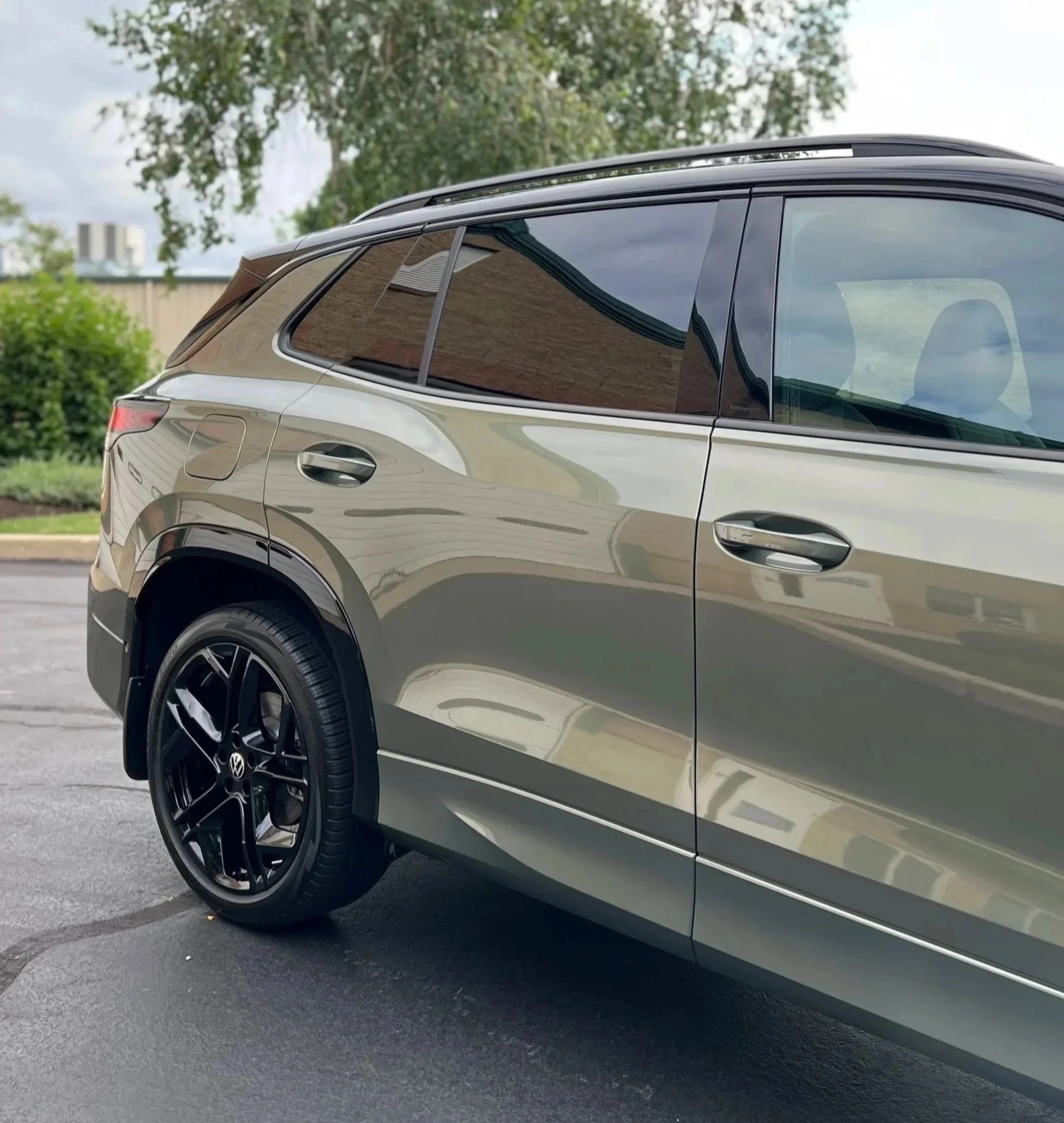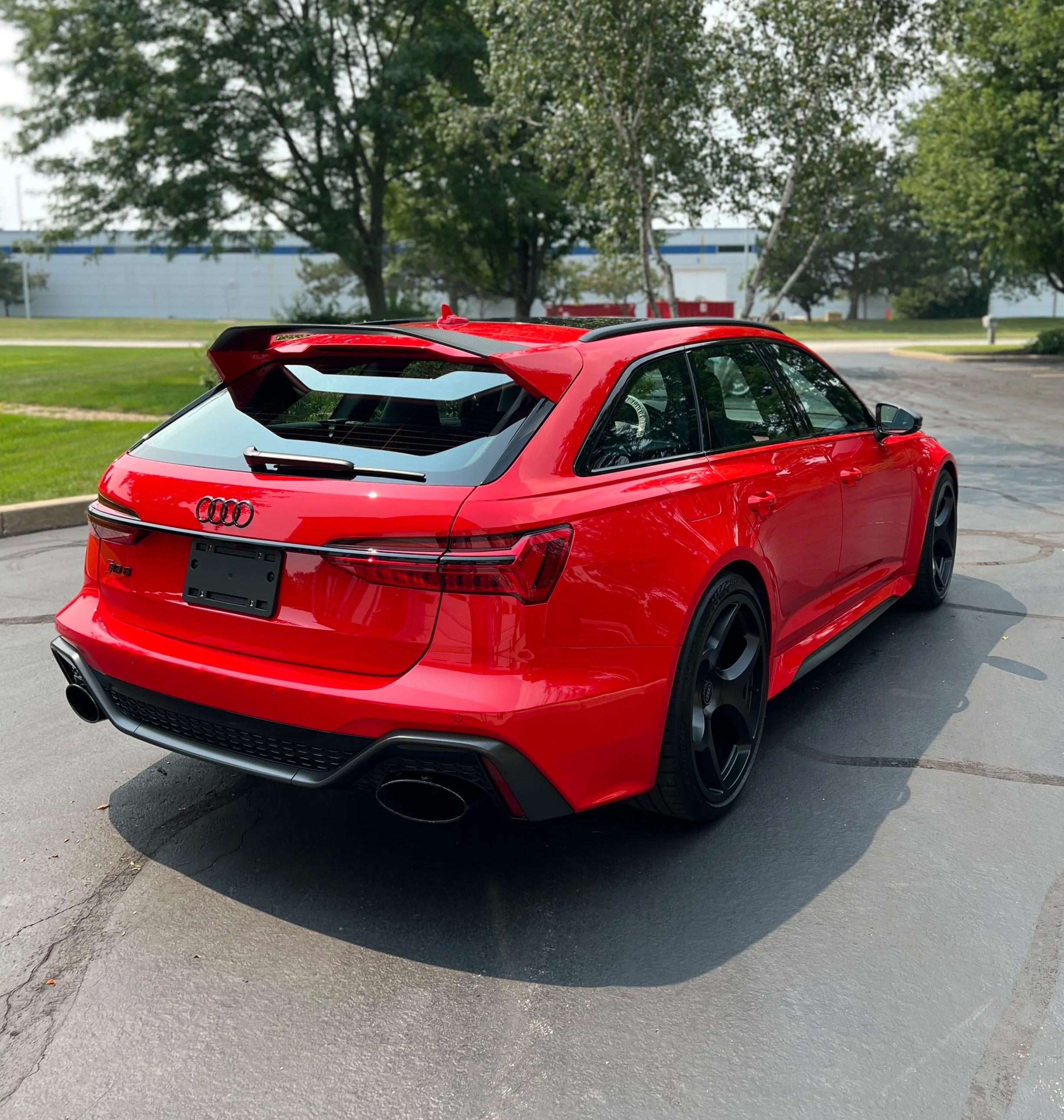Paint Correction Services
Basic Paint Correction
STARTING AT:
$400
Hand Wash & Decontamination
Single Step Paint Correction
Removes light scratches and swirl marks, improving gloss
60-70% Correction
Sealant Applied to Exterior Surfaces:
Headlights & Taillights
Exterior Plastics/Trim/Vinyl
All Painted Surfaces
Wheels
Glass
No-Sling Tire Dressing Applied
2 - Step Paint Correction
STARTING AT:
$650
Hand Wash & Decontamination
2 - Step Paint Correction
Cut & Polish to remove moderate scratches, oxidation, and heavier swirl marks, restoring clarity and depth
80-90% Correction
Sealant Applied to Exterior Surfaces:
Headlights & Taillights
Exterior Plastics/Trim/Vinyl
All Painted Surfaces
Wheels
Glass
No-Sling Tire Dressing Applied
3 - Step Paint Correction
STARTING AT:
$1,150
Hand Wash & Decontamination
3 - Step Paint Correction
Aggressive Cut, Mid-step, and polish to remove and refine heavy defects, deeper scratches, and oxidation for the highest clarity and gloss.
Sealant Applied to Exterior Surfaces:
Headlights & Taillights
Exterior Plastics/Trim/Vinyl
All Painted Surfaces
Wheels
Glass
No-Sling Tire Dressing Applied
What is Paint Correction?
Paint correction is a crucial step in automotive detailing that aims to restore a vehicle's paintwork to its original beauty. Over time, the paint can become damaged due to environmental factors, road debris, improper washing, and exposure to the sun. Paint correction involves carefully removing imperfections and enhancing the overall appearance of the vehicle. It eliminates issues like swirl marks, scratches, water spots, oxidation, and contaminants. These imperfections can make a vehicle look neglected, even if it's new. Paint correction revitalizes the paint by improving its clarity, depth, and shine. The surface is then refined to eliminate defects.
To protect the restored surface from contaminants and UV rays, a paint sealant or ceramic coating can be applied. Paint correction is a meticulous process that brings back the original shine and luster of the paint by removing scratches and swirl marks. If your car's paintwork looks dull or flawed, consider paint correction for a makeover.
STOP GOING THROUGH AUTOMATED WASHES!
Are you tired of automated car washes damaging your paint and leaving swirl marks? Have you noticed a decline in your vehicle's appearance after frequent washes?
Let's explore why you should stay away from Automated Car Washed and bring your vehicle to your Local Trusted Detailer.
-
Automated car washes often use highly concentrated, industrial-grade cleaning chemicals designed to remove dirt quickly. While effective at cutting through grime, these harsh chemicals can strip away protective wax or sealants on the car’s surface, leaving the paint exposed to contaminants and oxidation. Over time, repeated exposure can dull the paint, lead to fading, and make the surface more susceptible to swirl marks and scratches.
-
Many automated car washes use stiff bristles or rubber blades that, while efficient at scrubbing, can be too aggressive on the car's paint. These materials often retain dirt and debris from previous washes, which effectively turns them into sandpaper, leaving swirl marks and micro-scratches on the car's surface.
-
Automated washes typically recycle their water to cut down on costs, but the filtration systems aren’t always able to remove all the dirt, oil, and contaminants. When sprayed on a car’s surface, these particles act like abrasives, contributing to the swirl marks and dulling the paint's finish over time.
-
Many automated washes use blowers or rough cloths for drying, which can cause streaks and marks. Some cloth-based dryers are not washed or maintained regularly, meaning they accumulate dirt and other contaminants that, when wiped across the paint, create swirls and scratches.
-
Paint correction is a meticulous process that removes swirl marks, scratches, and oxidation by carefully buffing and polishing the paint's surface. Through a series of abrasive compounds and pads, a skilled detailer can safely remove a fine layer of clear coat, which eliminates the visible imperfections caused by automated washes. This process restores the paint’s smoothness and clarity, bringing back a deep, reflective shine. Additionally, after correction, protective coatings such as wax or ceramic sealants can be applied to shield the paint from future damage, ensuring it stays looking pristine.





